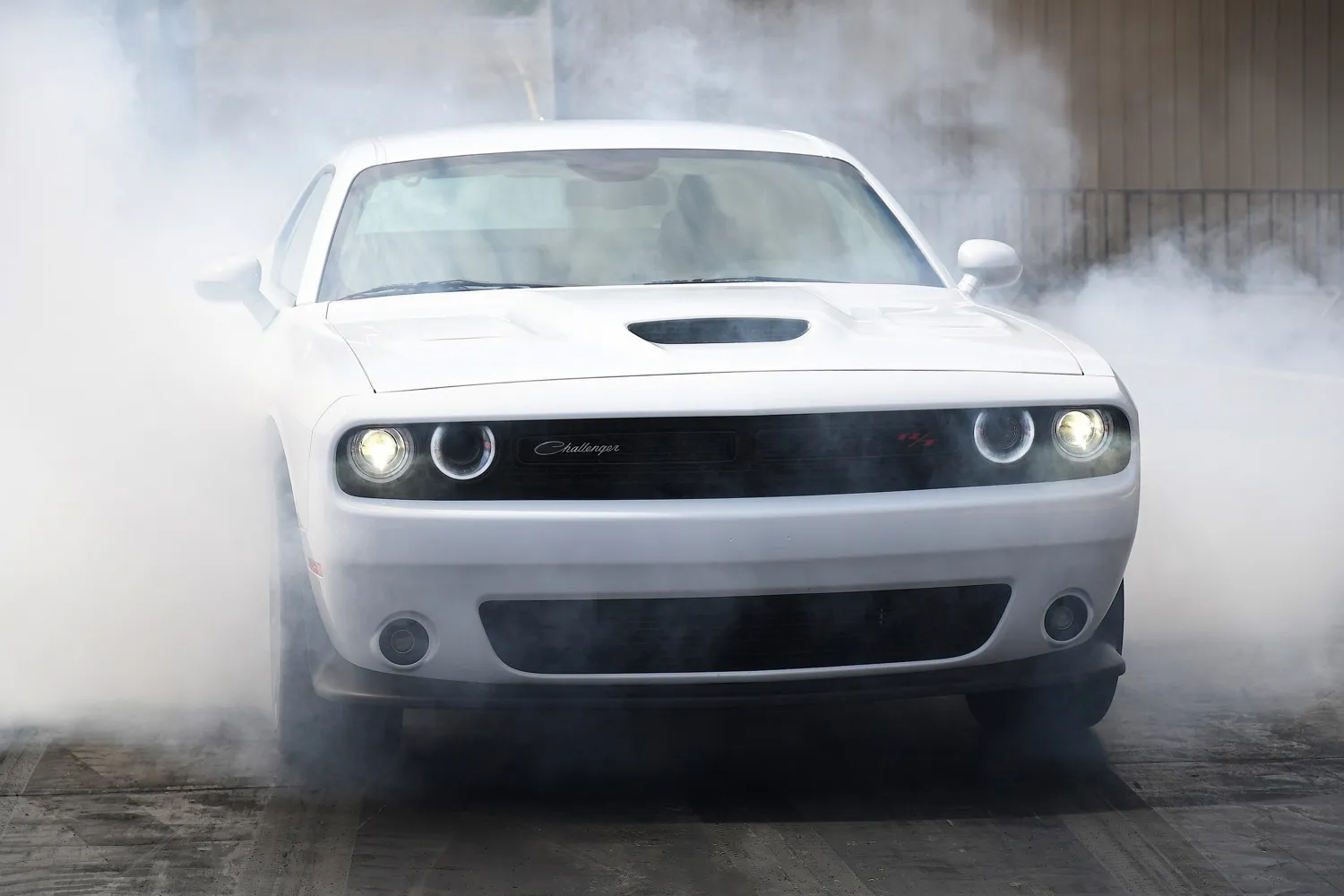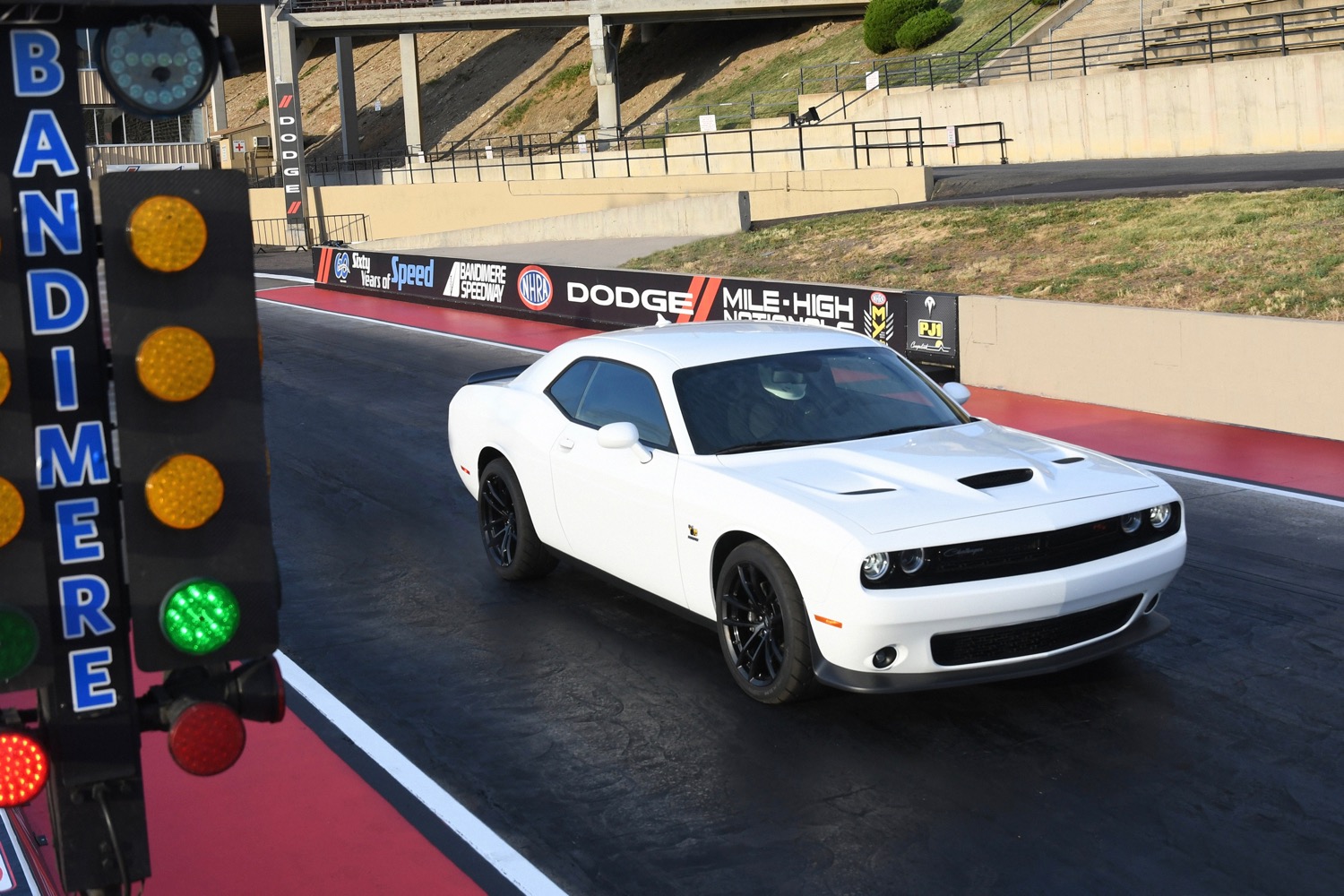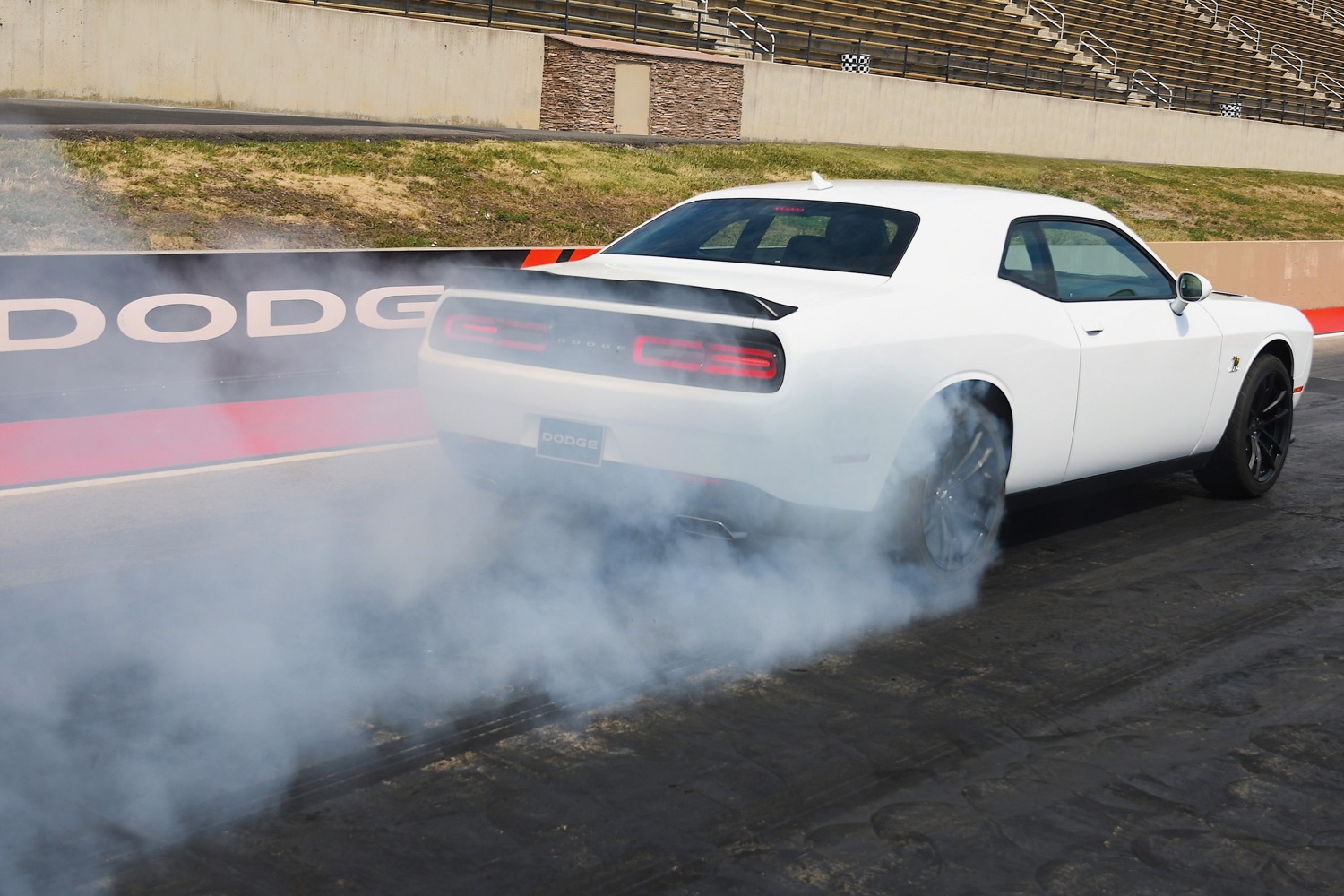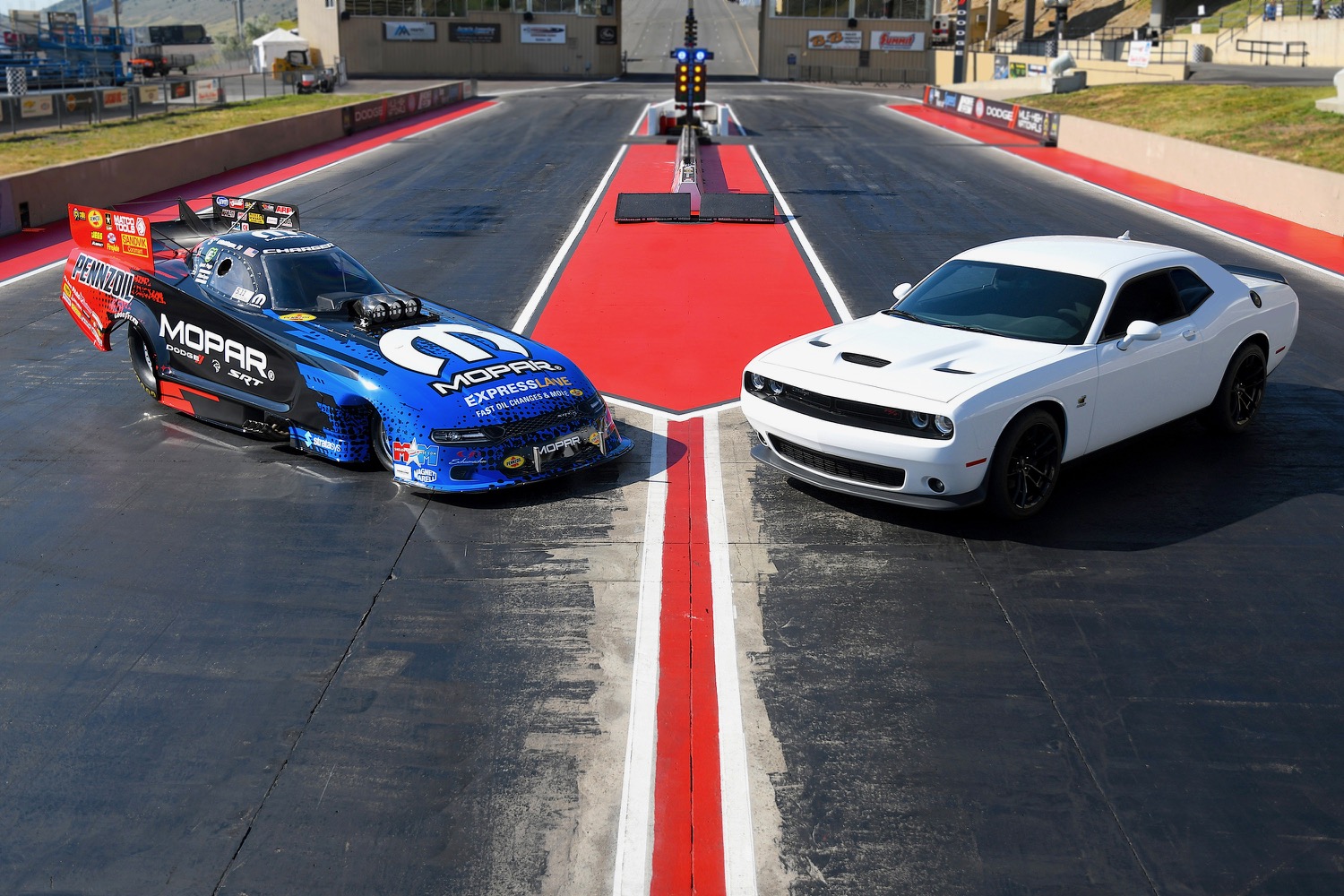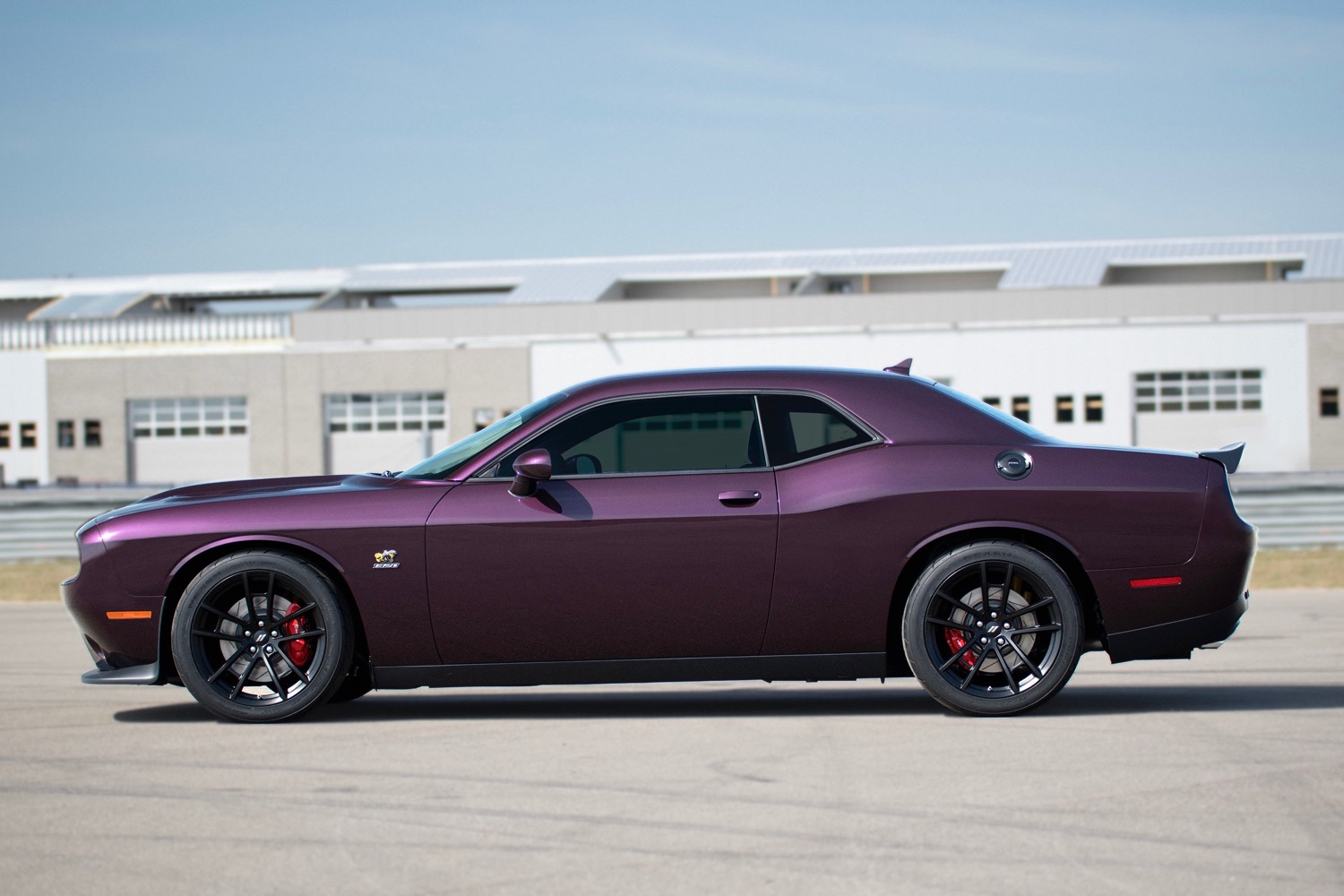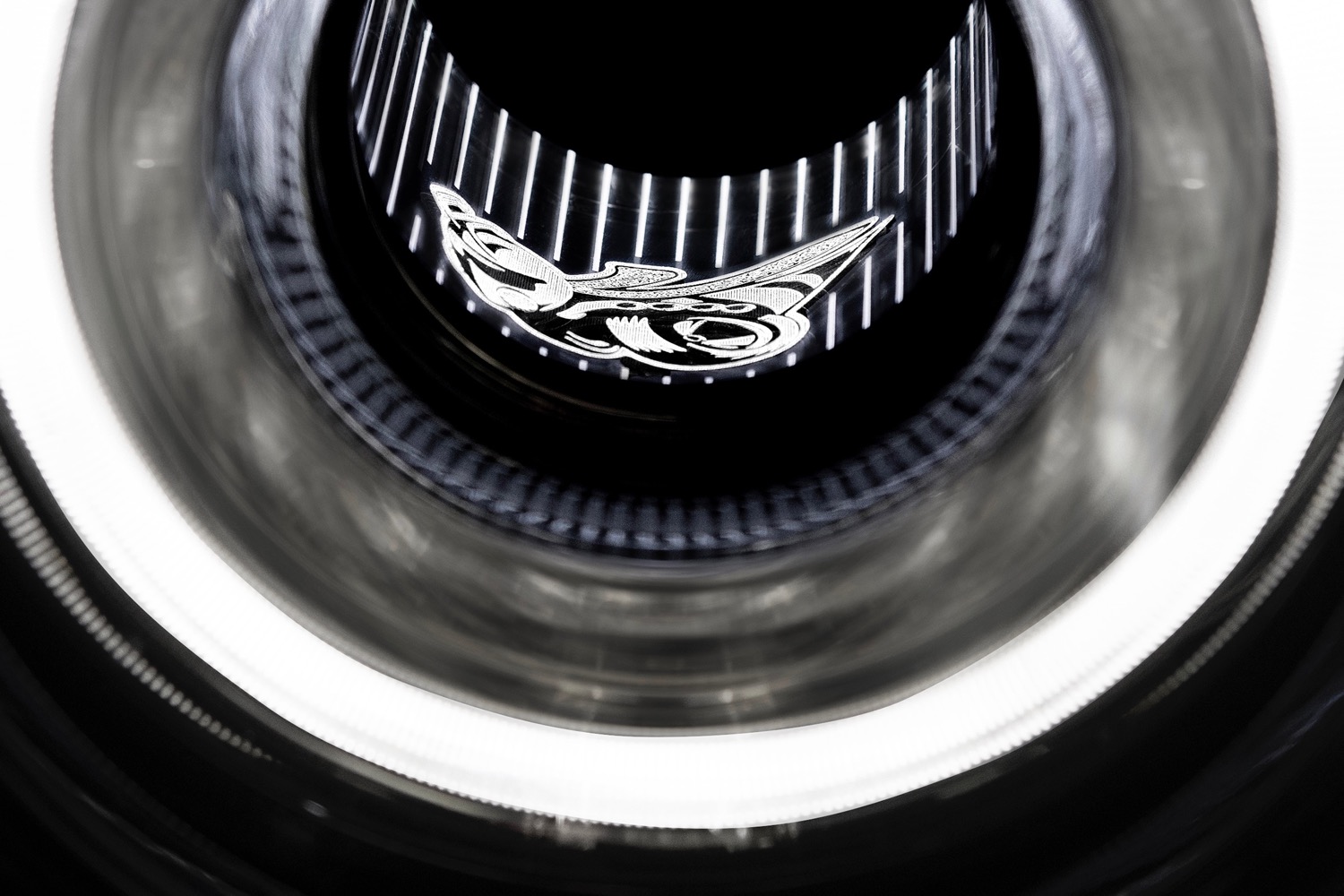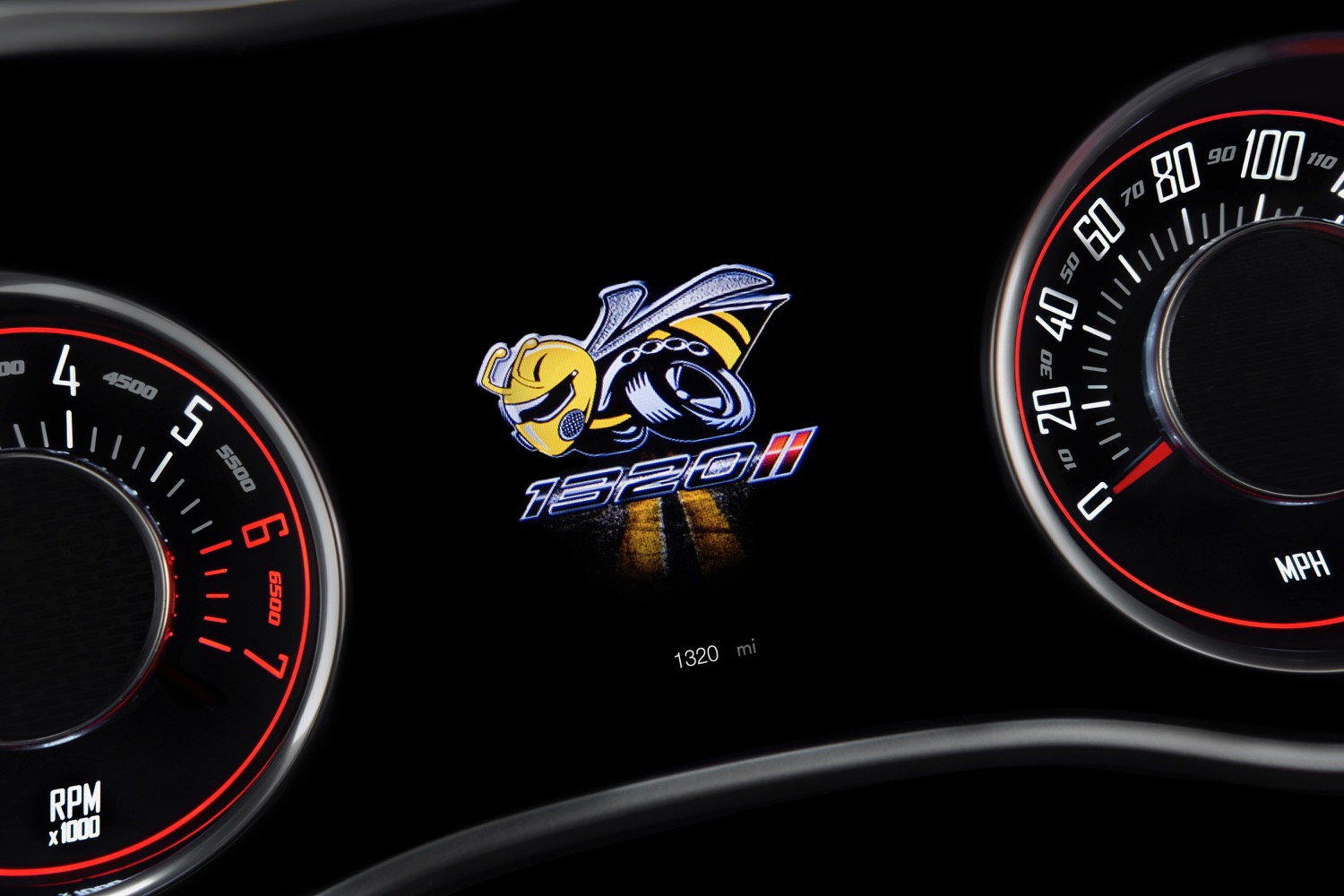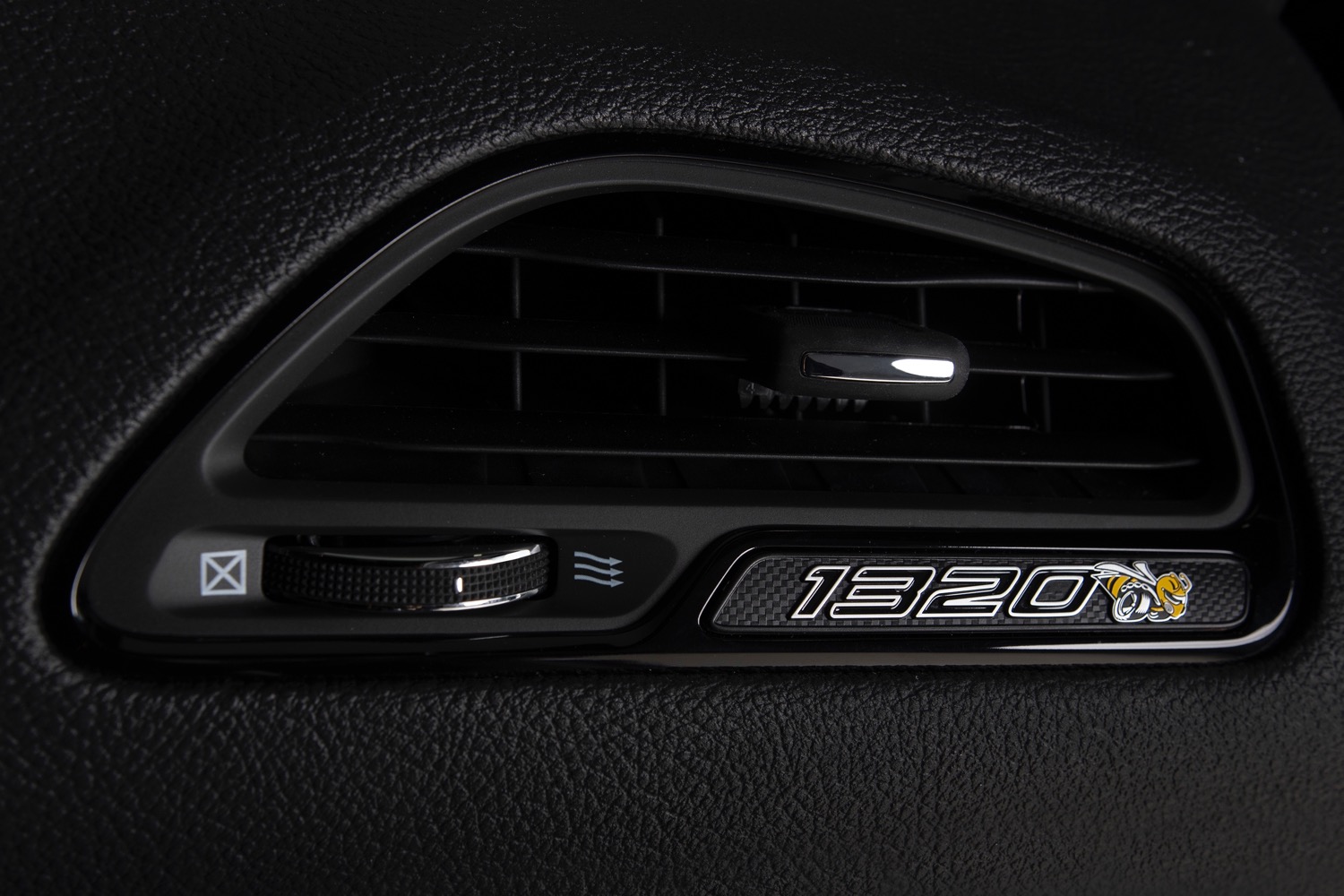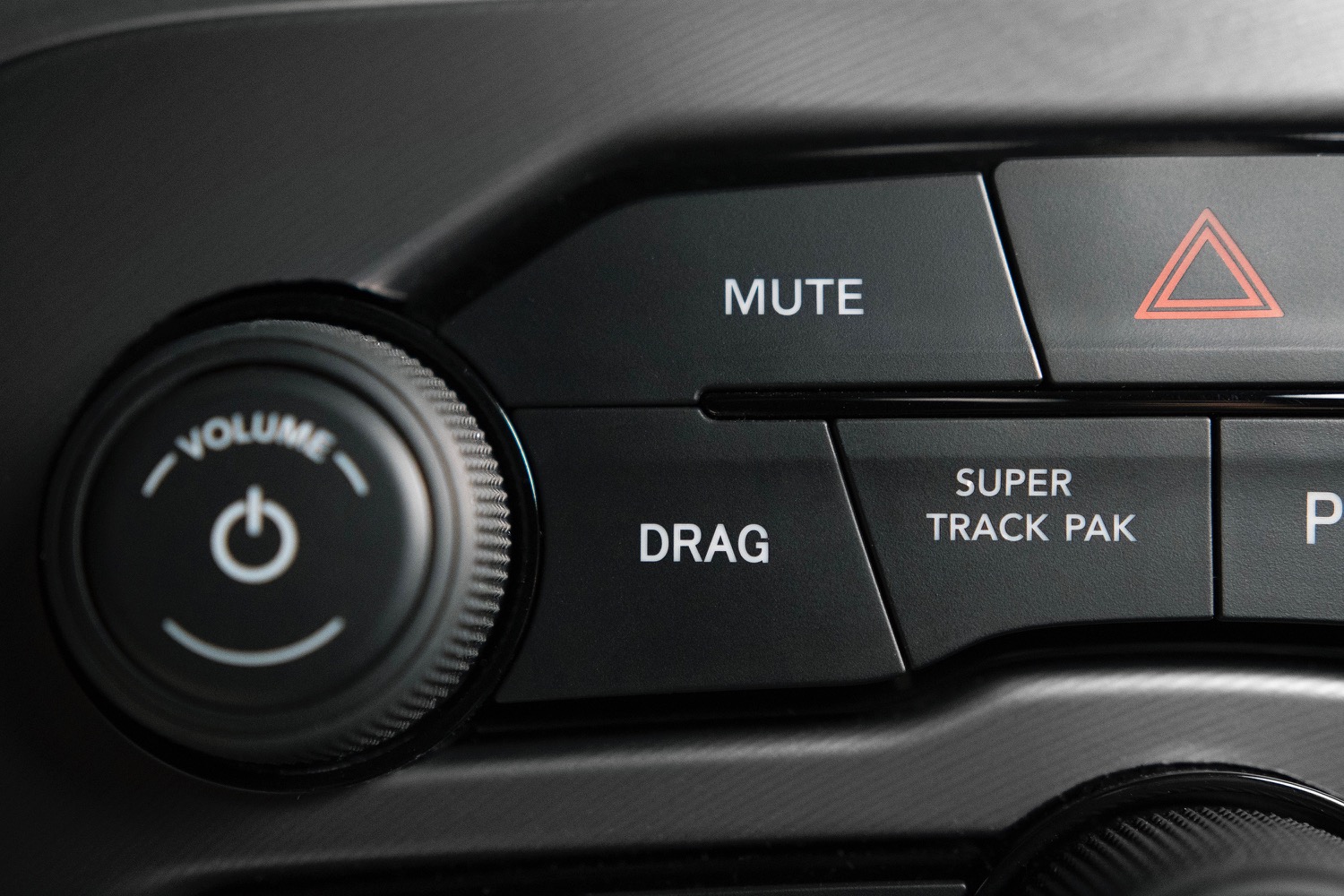Dodge has yet another new version of the evergreen Challenger, and it’s focused on drag racing. It’s called the 2019 Dodge Challenger R/T Scat Pack 1320 — the last part of that convoluted name references the length of a typical drag strip (1,320 feet, or a quarter mile). The new model isn’t as quick as the defunct, 840-horsepower Challenger SRT Demon, but it does borrow some of that car’s tech.
The 1320 is basically a Challenger R/T Scat Pack upgraded with some of the Demon’s trick drag-racing hardware. It features a 6.4-liter Hemi V8, which makes the same 485 horsepower and 475 pound-feet of torque that it does in the standard Scat Pack. Power is sent to the rear wheels through an eight-speed automatic transmission.
Here’s where things get interesting. The 1320 may not have as much power as the Demon, but has virtually everything else that made the Demon quick at the strip. An adaptive suspension system includes a “Drag Mode” that helps shift weight to the rear during launches to improve traction. Line locks lock the front brakes for easier burnouts. A transbrake locks the transmission’s output shaft while the car is staged at the starting line, allowing the car to remain stationary while in gear for quicker launches.
Like the Demon, the 1320 also rides on street-legal drag radial tires, and comes standard with only one seat to save weight. A front passenger’s seat and rear seats are $1 options. However, the 1320 does include niceties like dual-zone automatic climate control and a Uconnect infotainment system with 8.4-inch touchscreen, which controls many of the driver aids.
Dodge says the Challenger R/T Scat Pack 1320 will do 0 to 60 mph in 3.8 seconds and run the quarter mile in 11.7 seconds at 115 mph. That’s 0.3 of a second quicker in both the 0 to 60 sprint and the quarter mile than a non-1320 R/T Scat Pack, according to Dodge. However, it’s not as quick as the Demon or the also new-for-2019, 797-hp Challenger SRT Hellcat Redeye Widebody.
But the 1320 will be cheaper. It adds $3,995 to the standard R/T Scat Pack, which starts at $38,995. Add in $1,595 for the mandatory automatic transmission (a stick shift is available on other Challenger models) and $1,395 destination charge, and the R/T Scat Pack 1320 rings in at $45,980. In comparison, the Hellcat Redeye starts at $72,745, with destination charge. If all of this seems a bit confusing, you’re not alone. Dodge now offers 12 distinct versions of the Challenger, after all.
